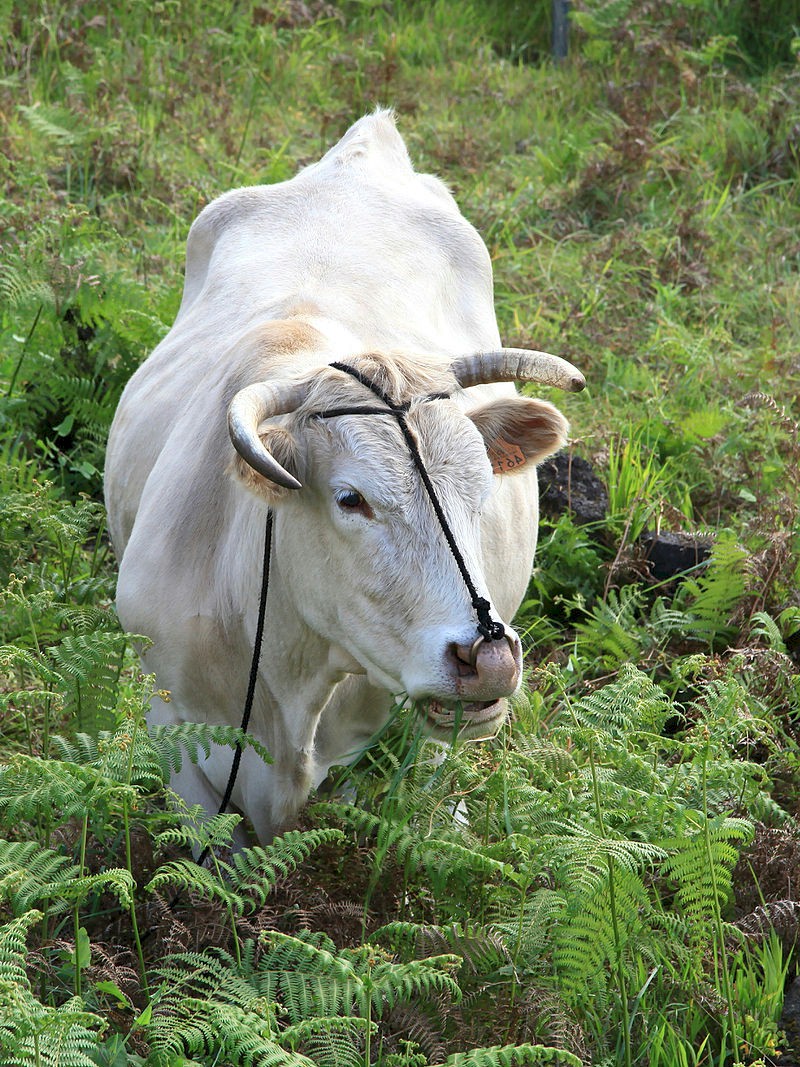The Palmera is an endangered breed of cattle from the island of San Miguel de La Palma, in the Spanish autonomous community of the Canary Islands. The cattle are not indigenous to the island, but were brought by European settlers in the fifteenth century. The Palmera derives from the Rubia Gallega breed of Galicia. It is distributed mostly in the municipalities of Breña Alta, Breña Baja, El Paso, Garafía, Los Llanos de Aridane and Villa de Mazo, with small numbers in the municipalities of Puntagorda, Santa Cruz de La Palma and Tijarafe; a few may be found on the islands of Fuerteventura and Tenerife.
The Palmera was brought to La Palma by European settlers in the fifteenth century. It is thought to derive from the Rubia Gallega breed of Galicia, in north-western Spain. It is a triple-purpose breed, well adapted to the mountainous conditions of the island. Following the mechanization of agriculture in the second half of the twentieth century, demand for draught animals fell sharply; there was also competition from imported beef and dairy stock.? In 1991 the population was reported to be 172 head.
The Palmera was classified among the breeds "at risk of extinction" by the Ministerio de Agricultura, Alimentación y Medio Ambiente, the Spanish ministry of agriculture, on 7 November 1997.? A breeders' association, the Asociación Nacional de Criadores de Ganado Vacuno de Raza Palmera, was formed in 1999, and the Palmera breed received official recognition on 13 August 2001. At the end of 2014 the total population was recorded as 596, of which 417 were female and 179 male. A continuing threat to the survival of the breed is the progressive depopulation of rural areas and the movement, particularly of young people, to urban areas.
Content and Photos Source: Wikipedia.Org.

